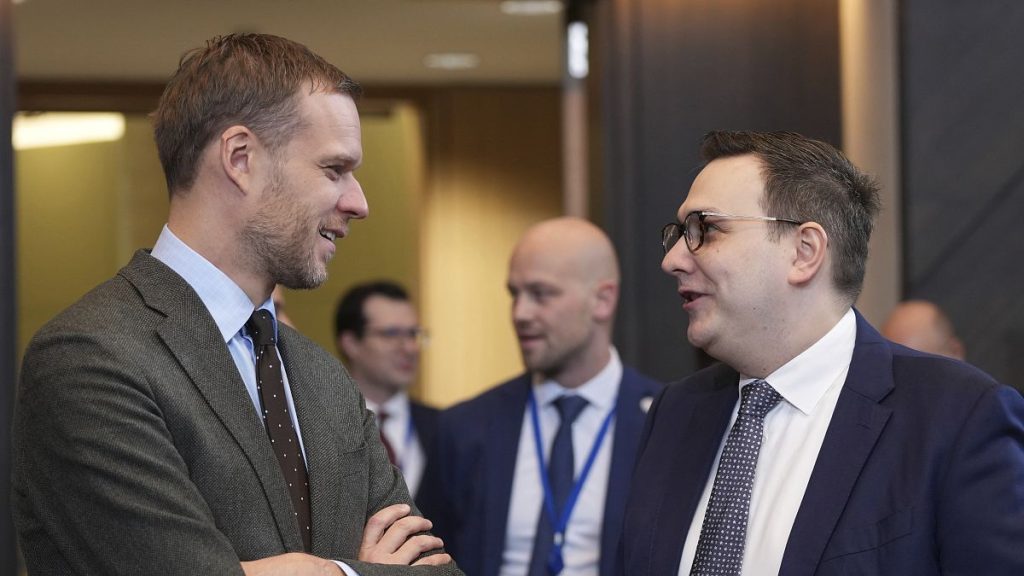In recent warnings from European officials, there is growing concern over Russia’s involvement in numerous suspicious incidents throughout Europe, as highlighted by Czech Foreign Minister Jan Lipavský. He detailed that of the 500 reports of suspicious activity this year, about 100 incidents could be linked to Russian hybrid warfare tactics, which include cyberattacks, arson, and espionage. This alarming trend underscores the urgent need for unity among Ukraine’s allies to firmly establish that such disruptive actions by Moscow will not be tolerated. Lipavský emphasized that a collective response is necessary to send a clear and unequivocal signal to Russia about the consequences of its aggressive behavior.
The discussion around these threats occurs nearly three years into Russia’s full-scale invasion of Ukraine, which has prompted heightened attention to Moscow’s “staggeringly reckless” actions across Europe. Notably, European leaders, including Richard Moore of MI6, have pointed to a concerted campaign of sabotage attributed to Russian operatives targeting vital infrastructure and geopolitical stability in the region. Recent incidents, such as the disruption of an undersea communication cable between Germany and Finland, serve as prominent examples of the threats posed by Russian activities. The rhetoric surrounding these developments reflects a broader acknowledgment of the risks associated with Kremlin actions, which extend beyond military conflict to encompass psychological and operational warfare.
Deepening concerns stem from the potential implications of such hybrid warfare tactics. European intelligence officials, like Nicolas Lerner, have highlighted the stakes involved in this ongoing confrontation, asserting that the collective security of Europe hinges on the outcome of the conflict in Ukraine. The combative actions of Russia not only undermine security but also threaten to destabilize the political landscape across multiple nations. As Europe faces this challenge, there is an evident need for a robust strategy to counteract Russian influences and to navigate the complexities derived from ongoing geopolitical tensions.
One of the most recent incidents that sparked inquiry was a DHL cargo plane crash in Vilnius, Lithuania, which killed a crew member. The crash raised suspicions among officials, including German Foreign Minister Annalena Baerbock, who suggested the possibility of a hybrid attack. The investigation into the incident is ongoing, but it exemplifies the pervasive instability currently affecting European nations. This incident further reinforces the notion that Europe is grappling with a landscape fraught with uncertainty and potential danger, prompting officials to question the nature of such occurrences amid an overarching climate of hybrid threats.
In light of these developments, the discourse surrounding Ukraine’s allies response to Russian aggression is increasingly centered on establishing resolute measures to counteract both current and future threats. The concept of hybrid warfare challenges traditional notions of engagement, necessitating innovative tactics and cooperative frameworks among NATO members and other European partners. This entails not only enhancing technical and military capacities but also improving intelligence-sharing processes across nations to detect and thwart Russian operations effectively.
Lastly, the collective reactions of European leaders suggest a growing determination to confront Moscow’s disruptive strategies while reinforcing the principles of solidarity within the transatlantic alliance. As concerns about hybrid warfare mount, European nations are prompted to develop a unified stance that unequivocally rejects Russia’s hybrid aggressions. By fostering collaboration in security and intelligence, NATO and its partners can strive to minimize risks associated with Russian operations, ultimately aiming to restore stability and security within the region. The ongoing discourse around these incidents reflects an acute awareness of the challenges posed by hybrid warfare, emphasizing the critical need for vigilance and cooperation among Ukraine’s allies.

